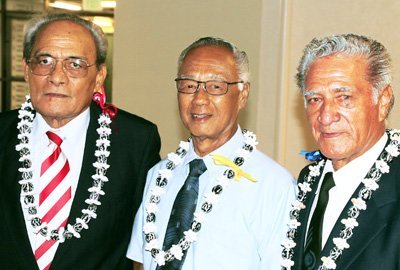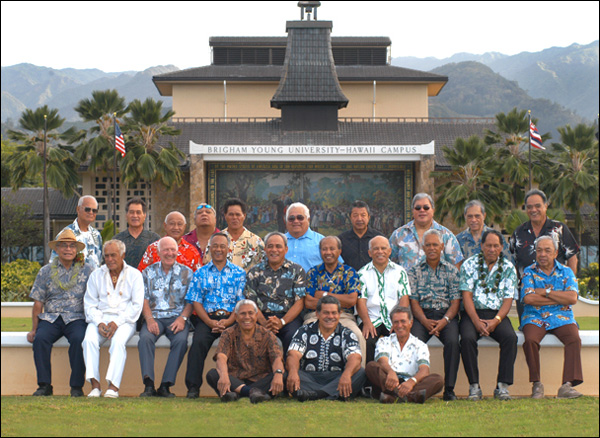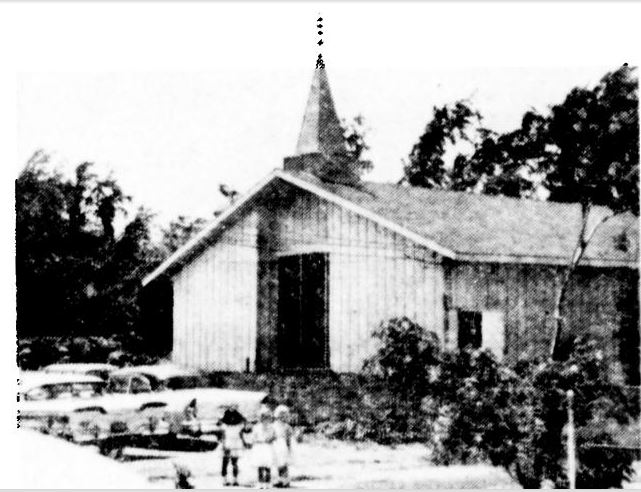Lāʻie Days “fireside” honors PCC “labor missionaries”
Young Mormon missionaries are widely recognized around the world, but some of you may be less familiar with a unique group of Mormon missionaries who began serving about 70 years ago, originally in Tonga and Samoa. We call them “labor missionaries,” because many of these young men (and also sometimes women) basically came from the villages as volunteers, were taught building trades by experienced leaders, and went on to erect hundreds of chapels, schools, other buildings and even a temple in the Pacific and Asia.
Some of them served freely for years; and we highly revere these men and women for their sacrifices.
Here’s a brief highlights timeline:
December 12, 1850: Mormon missionaries first arrived in Hawaii.
January 26, 1865: Church leaders purchased the 6,000-plus-acre Lāʻie Plantation.
July 7, 1865: Mission leaders, missionaries, and other members join the people already living in Lāʻie.
June 1, 1915: Church President Joseph F. Smith, who first came to Hawaii as a teenaged missionary in 1854, dedicated the site of the Lāʻie Temple.
February 7, 1921: Elder David O. McKay, then of the church’s Quorum of the Twelve, witnessed the multi-ethnic school children in the mission school then adjacent to the new temple in Lāʻie raise and pledge allegiance to the U.S. flag. He envisioned a school of higher learning would some day be built here.
February 12, 1955: Now as president of the church, David O. McKay dedicated the site of BYU-Hawaii in Lāʻie (which was originally known as Church College of Hawaii until 1974), and directed that it begin that fall in temporary facilities.
Summer 1955: Even as the small university was racing to get started on time, President McKay authorized calling labor missionaries to build the permanent campus and other surrounding church facilities.
December 17, 1958: President McKay dedicated the new campus; but he also soon authorized another phase of labor missionary construction that further expanded the university and built the Polynesian Cultural Center.
So, it was fitting that our annual Lāʻie Days celebration, which always includes a lot of fun and sports, usually a hukilau and island entertainment, started on a note of gratitude for the labor missionaries during the July 5th Sunday evening “fireside” program in what residents call the “old” Lāʻie chapel — although it’s been renovated many times over the years.
Antone “Tony” Haiku, a young Hawaiian from Kauai, had only been a Mormon for a few months in 1956 when he was called to Lāʻie as a labor missionary for the next several years.
“When we got here, there was a watermelon patch on the left, a sugar cane field on the right, and a U.S. flag in the middle of the new campus. They were just getting ready to put up the walls of the main building,” he told the fireside attendees.
Haiku was later asked to serve again during the second phase of construction that included the PCC. A large contingent of labor missionaries from Tonga, Samoa and New Zealand, most of whom had already been serving back in their home islands for three years, joined him in March 1960. Even so, coming to Hawaii back then was a new adventure.
Sione Feinga, a Tongan, recalled how he and his fellow missionaries from Tonga and Samoa soon discovered a big difference as Hawaii missionaries: “The first month we served here, in our little mail box we each got $10. We got together and said, we’ve come up in life. For three years in the islands we were lucky to have a coconut to drink sometimes. We never dreamed of getting paid.”
BTW, Haiku, Feinga and other labor missionaries remained in the area, raised their families, contributed greatly to their neighbors and community, and are still appreciated. Haiku retired after many years of working in Physical Facilities at the Polynesian Cultural Center, and Feinga retired from a similar position at BYU-Hawaii.

Former Lāʻie labor missionaries (left-right) Sione Feinga, originally from Tonga; Antone Haiku, originally from Kauai and Percy Te Hira, originally from New Zealand. All have lived in Lāʻie since completing their missions over 50 years ago. (Photo by Mike Foley)
Story by Mike Foley

Mike Foley, who has worked off-and-on
at the Polynesian Cultural Center since
1968, has been a full-time freelance
writer and digital media specialist since
2002, and had a long career in marketing
communications and PR before that. He
learned to speak fluent Samoan as a
Mormon missionary before moving to Laie
in 1967 — still does, and he has traveled
extensively over the years throughout
Polynesia and other Pacific islands. Foley
is mostly retired now, but continues to
contribute to various PCC and other media.



Hello My name is mita watene and i can relate to the exspereinces shared by labour missionaries,as i was one way back in 1952to1958 Iworked in the bricklaying crew under the leadership of elder childs,Very exciting years of my life .I returned home after my mission after the dedication of the temple